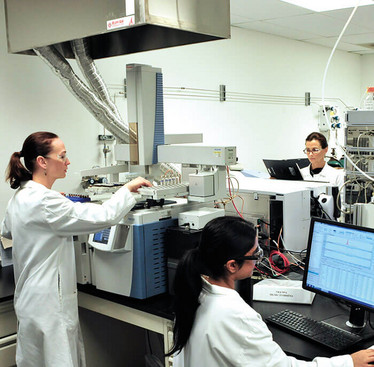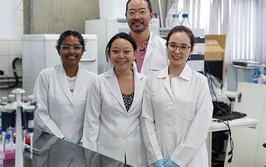Taking Analytical Control
Then & Now, with Katie Banaszewski, Method Development Scientist III at Now Foods, Bloomingdale, Illinois, USA.
sponsored by Thermo Fisher Scientific
Then: one cloudy day in 2014...
We’re a dietary supplement company and we’re naturally very conscious about the safety of our products, so it’s tough having to rely on contract analytical laboratories for our pesticide residue analysis. Our samples are highly complex (multivitamin products can have 40 compounds!) – and we simply don’t have the instrumentation needed to perform such analyses. Unfortunately, I don’t feel like we’re fully in control of our data and I also don’t know exactly what kinds of methods are being used by the contract lab. I know the contract lab will be doing their best – we chose them carefully. Nevertheless, it makes me feel a little uneasy – especially, given the finicky nature of pesticide residue analysis in botanical matrices (by far the most difficult analysis there is!). We want to continue to be the best, so we need to look at other options.
Bringing pesticide residue analysis in house makes great sense, but we need to make sure we invest in the right instrumentation. Of course, sufficiently sensitive hardware is important, but we also need software that is powerful enough to help us process the data efficiently; analyst time is valuable to us! Importantly, we also need flexibility; we may want to use the system for other kinds of analyses at a later date.
It’s a competitive market out there for analytical systems; we need to do some solid research...

Katarzyna "Katie" Banaszewski (left) takes the new instrument for a spin.
Now: May 3, 2016
Having reviewed the systems on the market, we finally decided on the Thermo Scientific™ TSQ™ 8000 Evo Triple Quadrupole GC-MS/MS. There are a couple of points that made this particular system stand out from the crowd. We are especially impressed with the versatility of the system; though pesticide residue analysis was a primary driver, we also needed to be able to accommodate other kinds of analysis; for example, headspace analysis for residual solvents or analysis of essential oils. Moreover, we needed the ability to make that switch quickly, avoiding downtime. Another appealing aspect was the ability to remove the source without breaking vacuum, which also allows us to maximize uptime of the instrument.
I remember when we were first considering our investment, good software was also high on our priority list. We are now using the Chromeleon™ 7.2 Chromatography Data System, which I would say is currently the most powerful software for navigating MS data. The fact that the qualitative and quantitative capabilities are integrated is fabulous. Plus, our analysts find it easy to use – they were very excited to start working with the new system.
Now that we’ve moved testing in house, we are in control of every aspect of our trace analysis program – and that means we’re also in control of the data, and in a better position to defend that data. Before, we could only trust the contract labs to do the best they could with our very difficult matrix sets.
We’ve always had very talented science teams, and now I feel like our laboratories are world class to match. And as a company, we can fully focus on the safety of our products. The dietary supplement industry is dynamic and vibrant – and our customers demand quality supplements. To stay ahead of the game, it’s clear that we need the most advanced technologies out there.

Rich Whitworth completed his studies in medical biochemistry at the University of Leicester, UK, in 1998. To cut a long story short, he escaped to Tokyo to spend five years working for the largest English language publisher in Japan. "Carving out a career in the megalopolis that is Tokyo changed my outlook forever. When seeing life through such a kaleidoscopic lens, it's hard not to get truly caught up in the moment." On returning to the UK, after a few false starts with grey, corporate publishers, Rich was snapped up by Texere Publishing, where he spearheaded the editorial development of The Analytical Scientist. "I feel honored to be part of the close-knit team that forged The Analytical Scientist – we've created a very fresh and forward-thinking publication." Rich is now also Content Director of Texere Publishing, the company behind The Analytical Scientist.

















